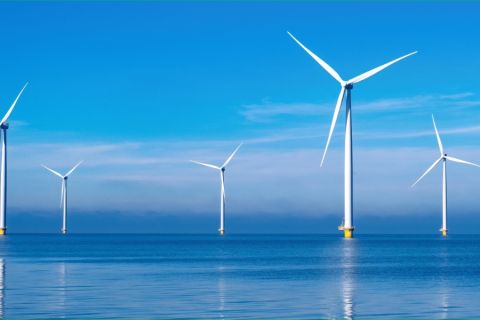
Eclipse Resources, a State College, Pa.-based independent, is making super-extended laterals the main focus of its Utica Point Pleasant Shale activity in Ohio. (Source: Hart Energy)
[Editor's note: A version of this story appears in the October 2018 edition of Oil and Gas Investor. Subscribe to the magazine here.]
The secret behind those super-extended laterals in U.S. shale? It is a holistic approach in which drilling and completion are considered two sides of the same coin.
Granted, super laterals are less than 1% of all horizontals. But, the technology exists now to drill and complete super-extended laterals beyond 20,000 feet and is applicable to several tight formation basins.
That is the lesson Eclipse Resources Corp. (NYSE: ECR) provided at Hart Energy’s DUG East conference earlier this summer. Eclipse is making super-extended laterals the main focus of its Utica Point Pleasant Shale activity in Ohio. The State College, Pa.-based independent is in full factory mode with an average lateral length of 16,300 feet across 17 wells during the first half of 2018.
RELATED: Appalachia Players Eclipse, Blue Ridge Mountain To Merge
The longest is a 20,803-foot lateral on the Mercury pad in Guernsey County, Ohio, which was drilled in 13.4 days from spud to total depth within a geologic sweet spot of 20 feet. Eclipse targets a directional drilling window of just seven feet to minimize undulations and reduce hole tortuosity for more efficient wireline completions.
The motivation for super-extended laterals is straightforward. Extended laterals spread fixed costs across more footage. In southern Ohio’s Utica Point Pleasant Shale, the cost to build locations can approach $3 million because of terrain and regulatory issues vs. $100,000 in the Permian Basin. Drilling two 8,000-foot laterals requires $16.4 million. Drilling one 16,000-foot lateral costs $13.2 million, doubles well level IRR and accelerates payout by 22% while providing the same reserves per lateral foot.
There is no deterioration in apples-to-apples EURs compared to shorter laterals, though that may stem from later generation completion techniques. Wherever it originates, the economics of extended laterals are compelling. Every incremental foot in excess of 13,000 feet improves the return on investment by 215% in the Utica dry gas window and 130% in the condensate window.
“We created a new elevated economic tier for technical and operational innovation,” Eclipse COO Oleg Tolmachev said.
Rig modifications require nothing extraordinary. Adding a third mud pump improves circulation rates at total depth to clean the wellbore and operate the rotary steerable tool. The extra pump provides insurance if something goes wrong with another pump and eliminates mud system non-productive time.
Eclipse found lower weight drilling mud is cheaper and easier to work with on well construction when using managed pressure drilling. Wireline and plug and perf remain the most cost-efficient way to deploy tools. Eclipse has drilled out 146 plugs on a single bit run along the lateral.
The company shaves $100,000 per well by using natural gas to power rigs and stimulation equipment, which reduces diesel use up to 70%.
Tolmachev used the term “holistic” to describe the well construction process.
“One piece of wisdom: Treat both drilling and completions as one integral operation,” he said. Eclipse approaches a drilling unit in 3-D geometry incorporating well spacing, land position, pad configuration and size, and simultaneous operations, with attention directed to completion interference on nearby wells.
Enhanced engineering synthesizes geologic idiosyncrasy and reservoir models to determine the best inter-lateral well placement. Planning involves all service providers and occurs over several months in advance of well construction.
Eclipse assembles performance specialist teams that feature subject matter experts in drilling operations, directional drilling, mud rheology, cementing and bottomhole tools.
Successful wellbore construction starts with the vertical hole. Precise attention to building the curve is necessary to reach planned total depth in a way that enables successful plug-and-perf operations along the lateral.
The company employs extensive use of wireline torque and drag to understand the lateral kick out and to model drill out in completions, which determines how pad development will unfold across the company’s acreage position.
Separately, Eclipse increased dry gas well production approximately 20% earlier this year after discovering zero deterioration of stimulated rock volume at higher production rates. That improved IRRs by 12% per well. The company expects well pads with super-extended laterals to produce 40- to 50 million cubic feet equivalent per day in 2018 on a multimonth plateau.
Up next? The company is addressing how to reduce completion cycle time across multiple super-extended laterals on a single pad.
Richard Mason can be reached at rmason@hartenergy.com.
Recommended Reading
US Interior Department Releases Offshore Wind Lease Schedule
2024-04-24 - The U.S. Interior Department’s schedule includes up to a dozen lease sales through 2028 for offshore wind, compared to three for oil and gas lease sales through 2029.
Utah’s Ute Tribe Demands FTC Allow XCL-Altamont Deal
2024-04-24 - More than 90% of the Utah Ute tribe’s income is from energy development on its 4.5-million-acre reservation and the tribe says XCL Resources’ bid to buy Altamont Energy shouldn’t be blocked.
Mexico Presidential Hopeful Sheinbaum Emphasizes Energy Sovereignty
2024-04-24 - Claudia Sheinbaum, vying to becoming Mexico’s next president this summer, says she isn’t in favor of an absolute privatization of the energy sector but she isn’t against private investments either.
Venture Global Gets FERC Nod to Process Gas for LNG
2024-04-23 - Venture Global’s massive export terminal will change natural gas flows across the Gulf of Mexico but its Plaquemines LNG export terminal may still be years away from delivering LNG to long-term customers.
US EPA Expected to Drop Hydrogen from Power Plant Rule, Sources Say
2024-04-22 - The move reflects skepticism within the U.S. government that the technology will develop quickly enough to become a significant tool to decarbonize the electricity industry.




